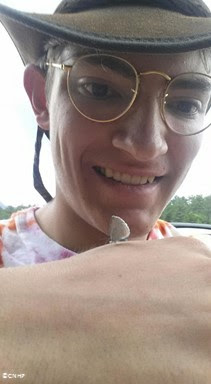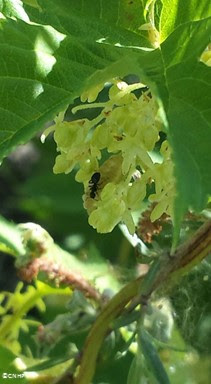Myrmecophily is a mouthful of a word that refers to positive interactions between ants and other species. Such relationships are well known among the ant and butterfly specialists of the world. CNHP undergraduate researcher Tristan Kubik is a bit of a prodigal ant expert, spending time as a high school student collecting and cataloging ants, and mapping ant colonies. Kubik teamed up with Rob Schorr, a CNHP zoologist, to assist Schorr in studying populations of the rare hops blue butterfly (Celastrina humulus). For his part, Kubik has focused on determining if myrmecophily plays a role in the hops blue butterfly life history. Kubik recently spent weeks monitoring eggs and larvae of the hops blue butterfly and has documented that ants tend larvae (see pictures below). Kubik has observed larger ants, such as carpenter ants, defending the larvae from predation. The caterpillars dissuade the ants from eating them by using pheromones and providing protein and sugar-rich secretions. This marks the first documentation that myrmecophily exists for hops blue butterflies and ants. It is theorized that ants provide defense for the larvae in exchange for the nutritional benefits from the nectar that the larva can excrete (mutualistic symbiosis). Alternately, some believe that the nectar is simply a calming agent that minimizes ant aggression (commensalism). Kubik and Schorr are excited about identifying what the advantages may be and how this discovery can play a role in butterfly conservation.
 |
| Tristan Kubik with a female hops blue butterfly. |
 |
| Ant crawling on larvae. |
 |
| Hops blue butterfly larva (Celastrina humulus) on a hops leaf. (Humulus neomexicanus). |




